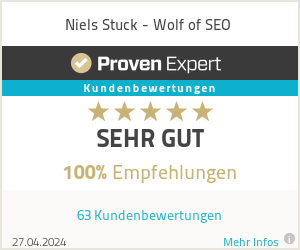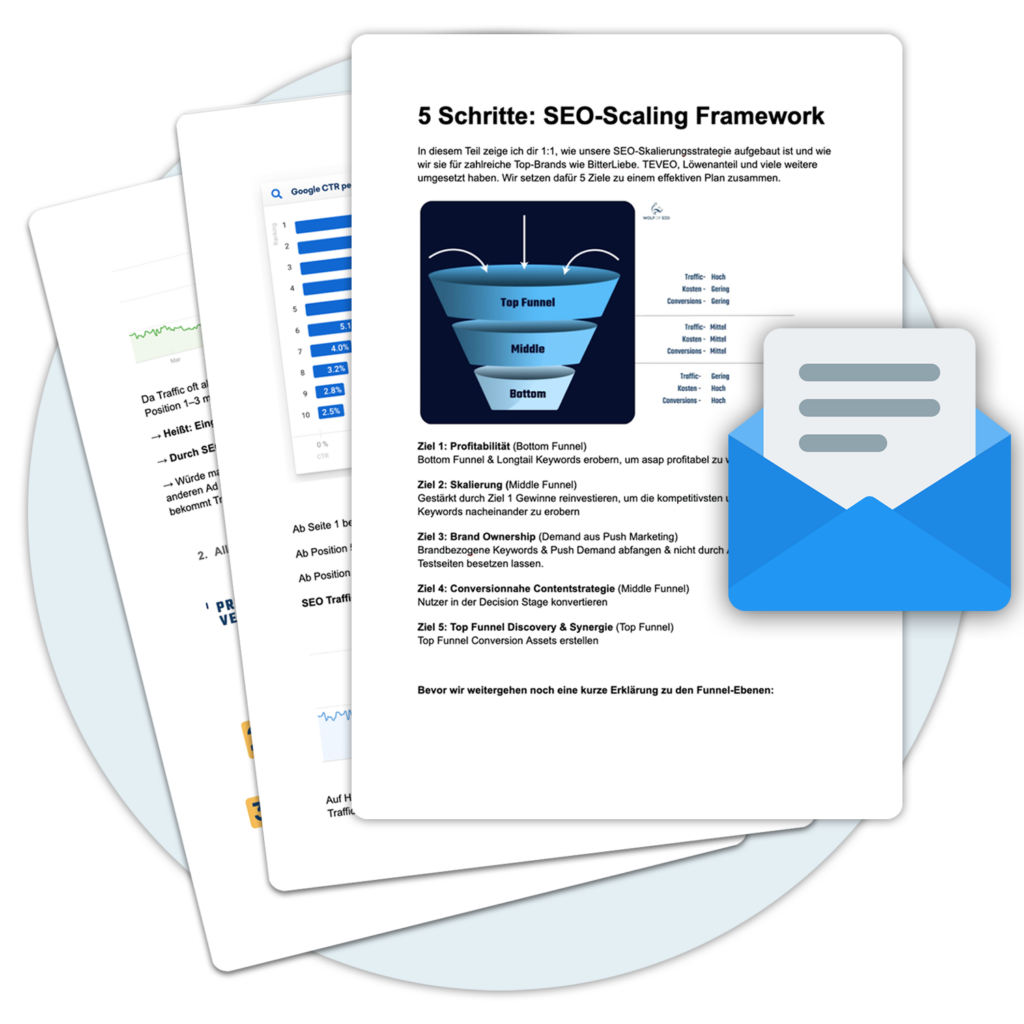What are YouTube tags and why are they important?
YouTube tags are words or phrases that describe what your video is about. They are used to make your videos easier for search engines and viewers to find. Adding relevant tags to your videos increases the likelihood of your content appearing in YouTube search results and being found by potential viewers. They therefore make a significant contribution to increasing the visibility and Range of your videos.
The importance of YouTube tags for SEO
YouTube-Tags sind ein wesentlicher Bestandteil der Suchmaschinenoptimierung (SEO) Ihrer Videos. Tags are keywords or search terms that are assigned to your video and make it easier for search engines to index your content and display it to relevant users.
By using relevant tags, you can improve the visibility and findability of your videos. For example, if someone searches for a specific topic and you have used appropriate tags, it is more likely that your video will appear in the search results.
Tags also help to display your videos in the recommended videos or similar videos. For example, if you use tags that are linked to popular videos on a similar topic, you increase the chances of your video being displayed as a suggestion.
It is important, Relevant and specific tags that accurately describe the content of your video. Avoid tags that are too general or misleading, as this can lead to a poor user experience and your videos could be classified as less relevant by search engines.
The use of relevant keywords in your YouTube tags can also help your videos to be better indexed. Keyword-Research is crucial here in order to determine the most frequently used search terms of your target group.
How to choose the right tags for your videos
Choosing the right tags for your YouTube videos is crucial for their visibility and Range. By using relevant tags, you can position your video better in the search results of YouTube and other search engines. Here are some tips on how to choose the right tags:
- Brainstorming: Start brainstorming and write down all relevant terms and keywords related to your video content. Remember to use both general and specific tags.
- Competitive Analysis: Look at other successful videos in your niche and search for the tags they use. This can help you identify ideal tags for your own video.
- Keyword-Tools: Use Keyword-tools such as the Google Keyword-planner or YouTube's own Keyword-tool to find more relevant tags for your videos.
- Trending topics: Use current trending topics and events in your tags to attract the attention of a wider audience. erlangen.
- Organization: Make sure your tags are organized and clearly related to your video content. Use multiple word tags and also one or two word tags to cover different search queries.
Use of keywords in YouTube tags
The use of keywords in YouTube tags is crucial to improve the visibility and findability of your videos. By specifically including relevant search terms, you can better reach your target audience and make your videos more attractive to potential viewers.
To find effective keywords for your YouTube tags, you should first create a Keyword-research. Use the following for this Keyword-tools such as the Google Keyword Planner or free options such as Keyword Tool or Ubersuggest.
Select keywords that match both your video content and the search queries of your target group. Make sure that the keywords are relevant and concise to increase the chance of a high ranking in the search results. However, avoid Keyword-Stuffing, bei dem zu viele Keywords verwendet werden, um Spam zu vermeiden.
Es ist auch ratsam, Long-Tail-Keywords zu verwenden. Diese bestehen aus mehreren Wörtern und sind spezifischer. Dadurch erreichen Sie zwar weniger Trafficbut the conversion rate can be higher because the search queries match more closely what your target audience is looking for.
Use trending topics in your tags
Using trending topics in your YouTube tags can help you gain more visibility and Range for your videos. By using tags that target current trends and popular topics, you can get your video into the relevant Search results and attract potential viewers.
The benefit of using trending topics in your tags is that you can attract the attention of viewers who are searching for those specific trending topics. It can also result in your video appearing in the suggestions of other videos that are also related to these trending topics.
When choosing trending topics for your tags, it's important to stay up to date and follow the latest trends in your niche or industry. Here are some strategies on how to use trending topics in your tags:
- Use current hashtags: Use popular hashtags that are related to your video content.
- Research current events: Find out about current events and trends in your industry and use appropriate keywords in your tags.
- Analyze your competitors' trends: Look at your competitors' tags and think about how you can integrate similar or related trending topics into your own tags.
Making good use of trending topics in your tags can help promote your videos to a wider audience and increase the chances of getting more views and subscribers.
The role of YouTube tags compared to thumbnails and titles
YouTube tags play a crucial role in improving the visibility and findability of your videos on YouTube. They are an important aspect of search engine optimization (SEO) and help your content to be found by potential viewers. Compared to thumbnails and titles, however, YouTube tags have a slightly different function.
Thumbnails and titles serve to attract users' attention and arouse their interest. They are the first thing potential viewers see when they search for videos or browse their subscriptions. They play an important role in arousing curiosity and getting them to click on your video.
On the other hand, YouTube tags serve to describe and categorize the content of your video more precisely. They are like keywords or tags that help to provide context and categorization. Relevance of your video. By using relevant tags, you can link your videos to other similar content and increase your chances of appearing in search results and suggested videos.
While titles and thumbnails help to attract users' attention, YouTube tags are more important for the actual findability of your videos. They enable the YouTubeSearch Engineto better understand your video and present it to the right viewers.
Is the quality of your content more important than your tags?
One of the most common questions among YouTube creators is whether the quality of the content is more important than the use of YouTube tags. The answer: Yes and no. The quality of your content is critical to attracting and retaining viewers. If your content is not interesting, entertaining or informative, viewers will simply tune out, regardless of how good your tags are. Diyetse, it's important that the quality of the content is strong and appeals to your target audience.
On the other hand, YouTube tags play a crucial role in the search engine optimization (SEO) of your video. If you use relevant tags that Keyword-phrases that people are searching for increases the likelihood of your video appearing in search results. This means more potential viewers and more opportunity to promote your Range to increase. Therefore, you should not neglect tags and make sure they are well researched and optimized.
Ultimately, it is a combination of high-quality content and well-optimized tags that is crucial to the success of your YouTube channel. Both the quality of the content and the use of relevant tags should be given equal consideration. With this in mind, it's important to put time and effort into creating great content, while also making sure your tags cover the right keywords to get your video in front of the right audience.
The best tools for YouTube tag research
When researching the right tags for your YouTube videos, there are various tools that can help you. Here is a list of the best free and paid tools that will give you deeper insights into tag analysis:
Top free tools for YouTube tags
- YouTube complete analysis: This free feature from YouTube gives you insights into the performance of your current tags and also suggests related tags.
- Google Keyword Planner: Although this tool was originally designed to search for relevant keywords for Google Ads but can also be used for YouTube tag research. It shows you the Search volume and competitive strength of your keywords.
- TubeBuddy: This Browser-extension offers a free version with which you can perform basic tag analyses. You can also use it to compare the tags of your own video with the tags of more successful videos.
Fee-based tools for deeper insights
For a more detailed and comprehensive tag analysis, there are also paid tools available. Here are some of the best tools:
| Tool | Advantages |
|---|---|
| vidIQ | Helps you to find out which tags your competitors are using so that you can optimize your own tags. |
| Keyword Keg | Offers extensive Keyword-research functions, which can also be used for YouTube tag searches. |
| Social Blade | Gives you insights into the tag strategies of successful YouTubers and helps you improve your own tags. |
Top free tools for YouTube tags
Using the right tools is crucial to maximizing the potential of your YouTube tags. Fortunately, there are a variety of free tools to help you choose the best tags for your videos and increase your visibility on YouTube.
1. YouTube search suggestions: The search function on YouTube is an effective tool for finding relevant tags. Simply type in your main keyword and look at the automatic suggestions. These suggestions will give you insight into what other users are searching for and help you customize your tags accordingly.
2 Google Trends: Although Google Trends is not a specific tool for YouTube tags, it can still help you identify current trends and popular topics. Search for relevant keywords and see if there are any current trends that you can use in your tags to increase your exposure.
3. Keyword-Planner from Google Ads: The Keyword-planner not only offers useful insights into the popularity of keywords, but also provides related Keyword-suggestions. Use the Keyword-planner to find alternative tags that support your videos and ensure more visibility.
| Advantages of free tools: | Disadvantages of free tools: |
|---|---|
| - No costs | - Limited range of functions compared to paid tools |
| - Simple operation | - Lack of accuracy or timeliness of the data |
| - Sufficient for getting started with tag research | - No individualized support |
Use these free tools to optimize your YouTube tags and make your videos more successful on the platform.
Fee-based tools for deeper insights
Another option for researching YouTube tags are paid tools that offer deeper insight into your competitors' keywords and tag strategies. These tools can help you optimize your own tag strategies and make your videos more visible.
Best practices for YouTube tags
Using appropriate tags in your YouTube videos is crucial to the success of your channel and content strategy.
To make sure your videos are found by the right audience, follow these YouTube tagging best practices:
- Relevance: Choose tags that accurately describe your content and are relevant to your video. Do not use misleading tags as this can lead to a poor user experience.
- Variety: Use a variety of tags to increase the chances of your video appearing in different search queries. Use variations of main keywords, synonyms and related terms.
- Popularity: Integrate keywords and terms that are frequently used by your target group into your tags. This increases the likelihood that your video will appear in relevant search results.
- Size: Do not limit yourself to a certain number of tags. Use the maximum number of tags that YouTube allows in order to Range to maximize
In addition to these best practices, you should also regularly review and update your tags to ensure they are still relevant and effective.
| Best Practice | Description |
|---|---|
| Relevance | Tags should precisely describe the content of the video |
| Diversity | Use a variety of tags with variations and synonyms |
| Popularity | Integrate frequently used keywords into your tags |
| Size | Maximize your Range by using all available tags |
What you should avoid with YouTube tags
When creating YouTube tags, there are certain things you should avoid at all costs to ensure that your videos are optimally found and seen. Here are some important points to look out for:
- Avoid superfluous tags: It is important that you only use relevant tags that actually reflect the content of your video. Superfluous tags can be confusing and negatively affect your video recommendations.
- Avoid tags that are too general: Try to choose specific tags that describe exactly what your video is about. Don't use overly general tags such as "funny" or "entertaining" as this can reduce the visibility of your video.
- Avoid buzzwords: YouTube recognizes and penalizes the excessive use of keywords. Therefore, avoid using keywords in your tags and focus on relevant keywords and phrases instead.
- Avoid spam tags: Adding irrelevant tags to your videos is considered spam and can have a negative impact on your channel's visibility. Stick to relevant tags that accurately describe the content of your video.
- Avoid too many tags: Although it's important to use relevant tags, that doesn't mean you should add hundreds of tags. Focus on the most important tags and use them wisely to maximize the effectiveness of your tags.







